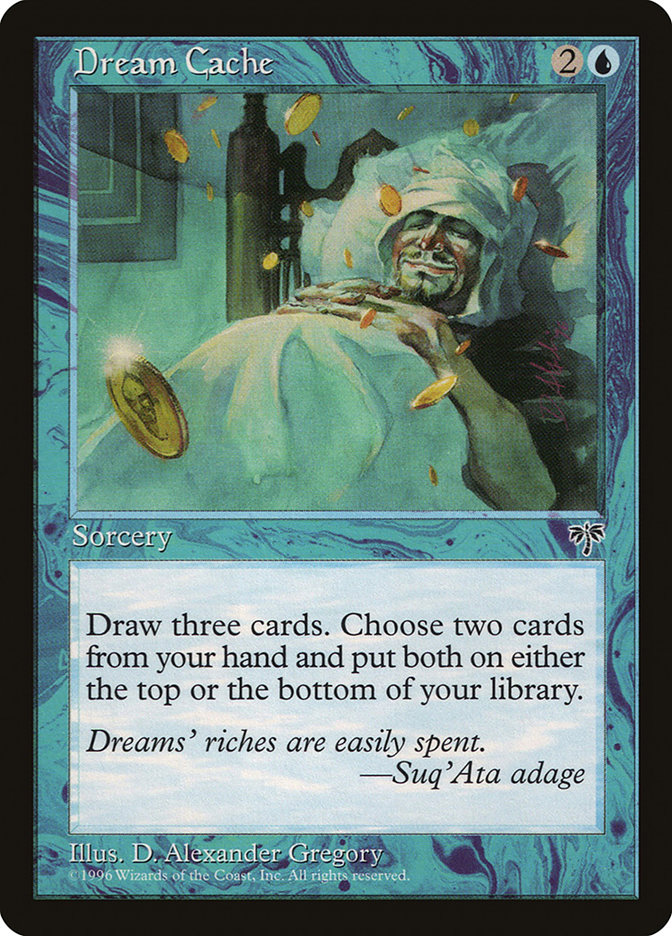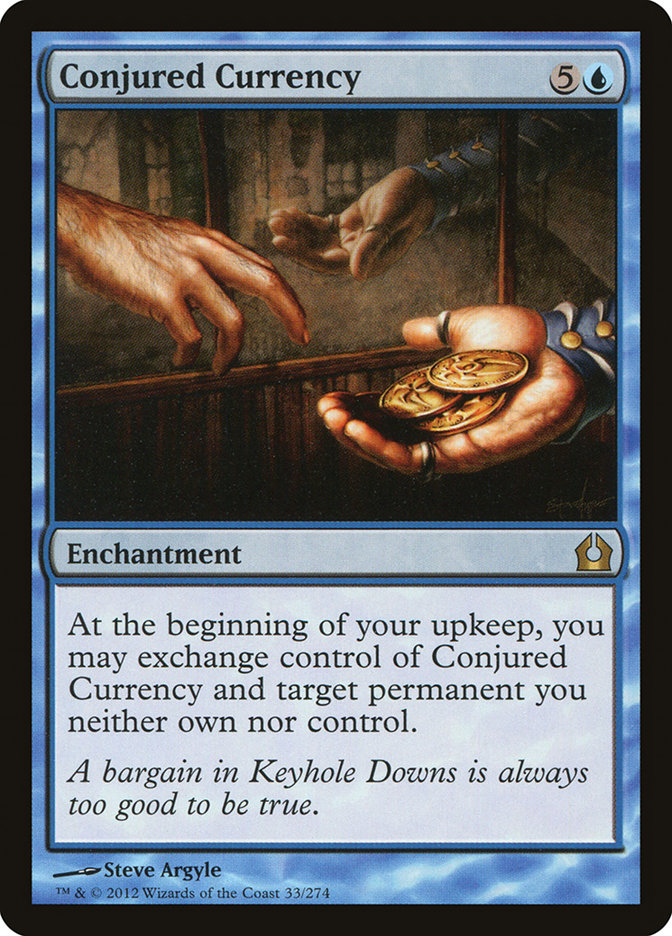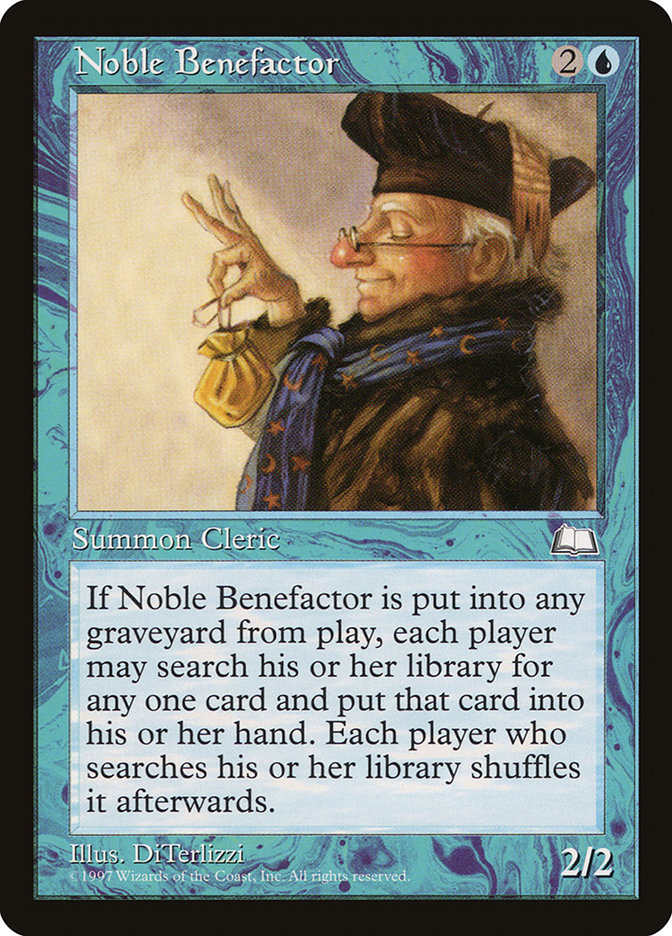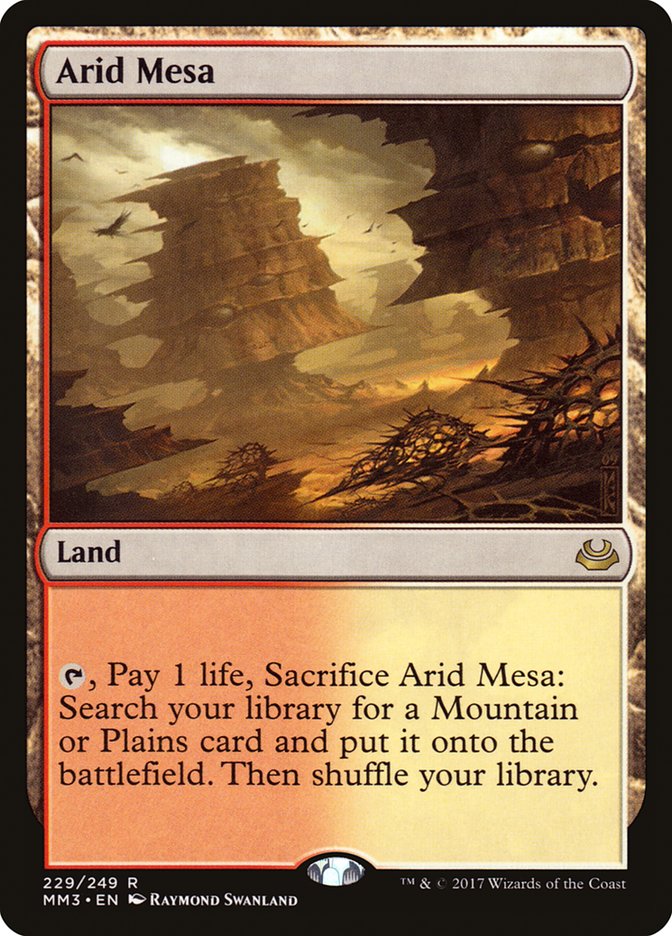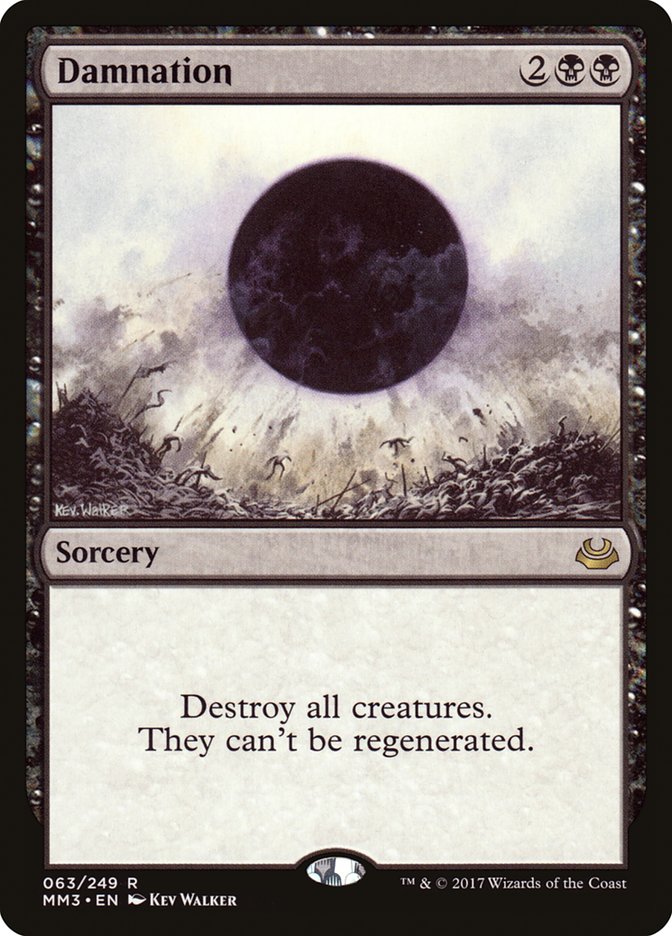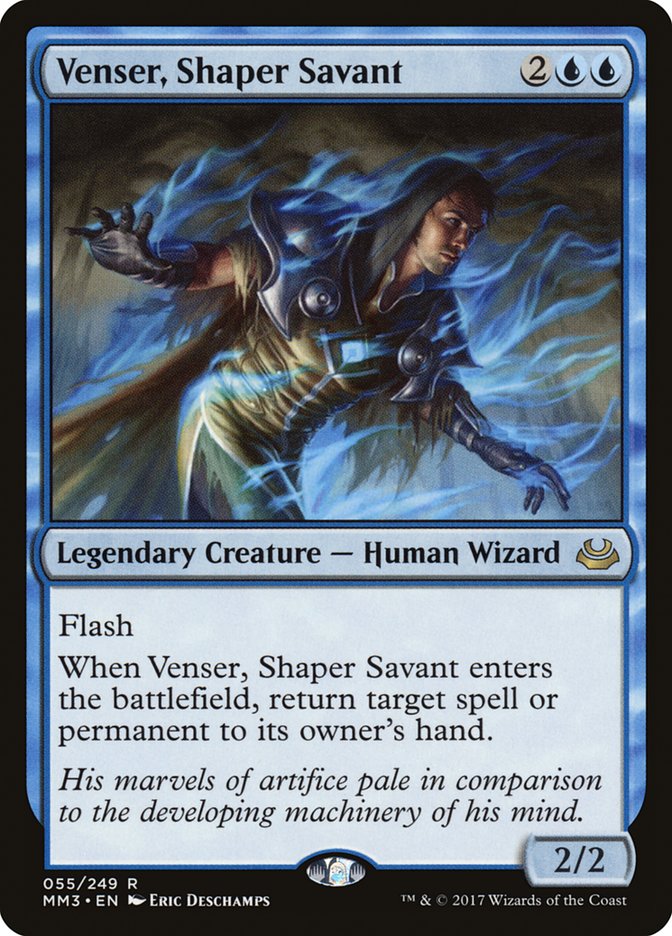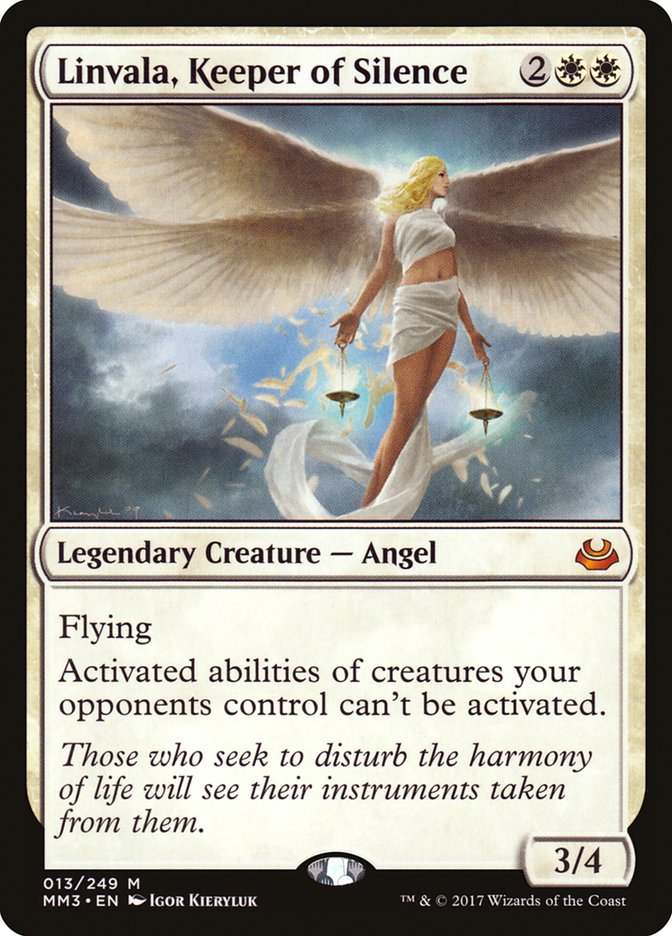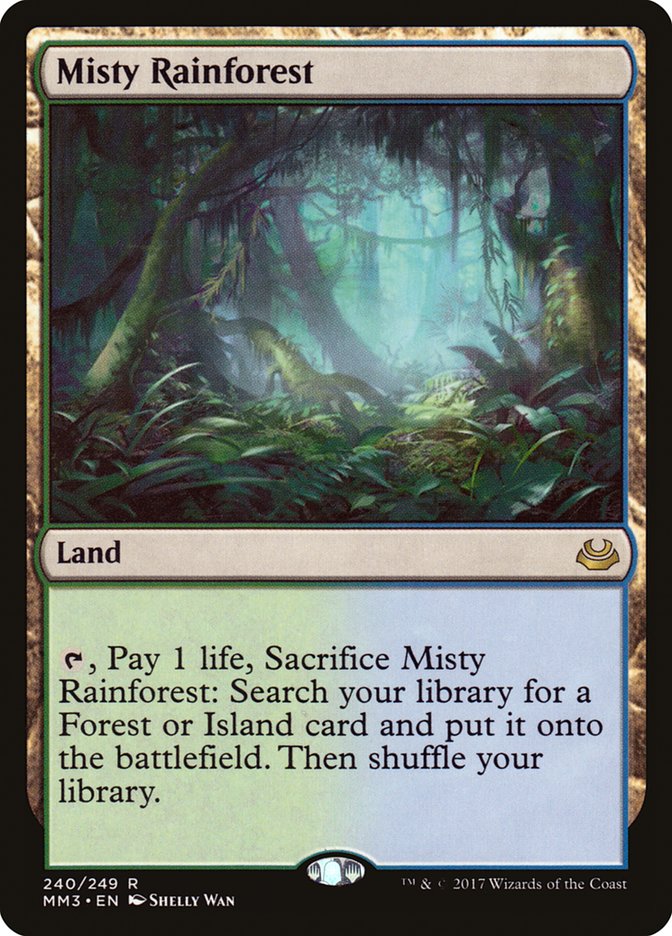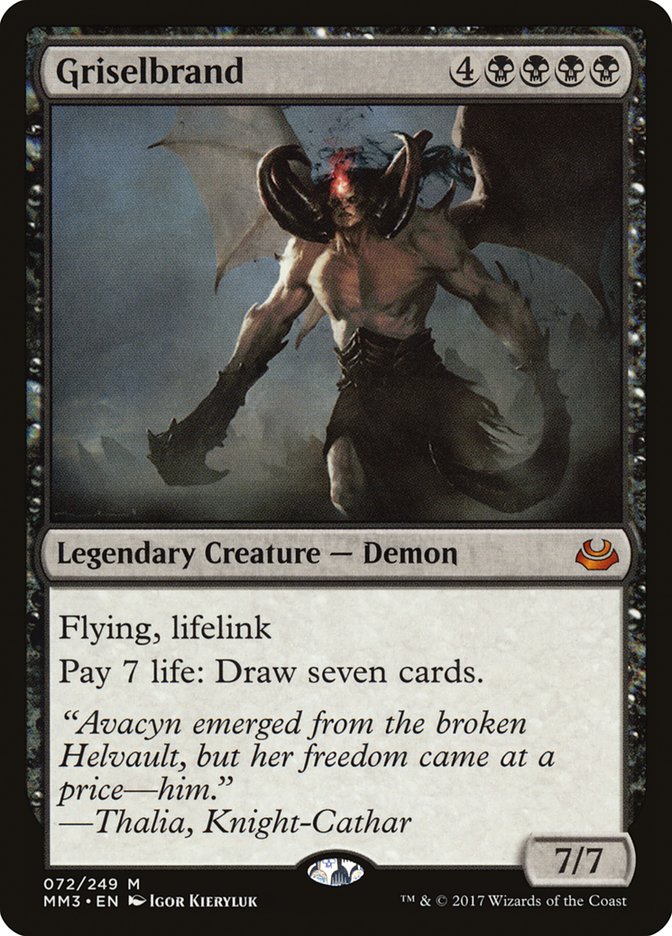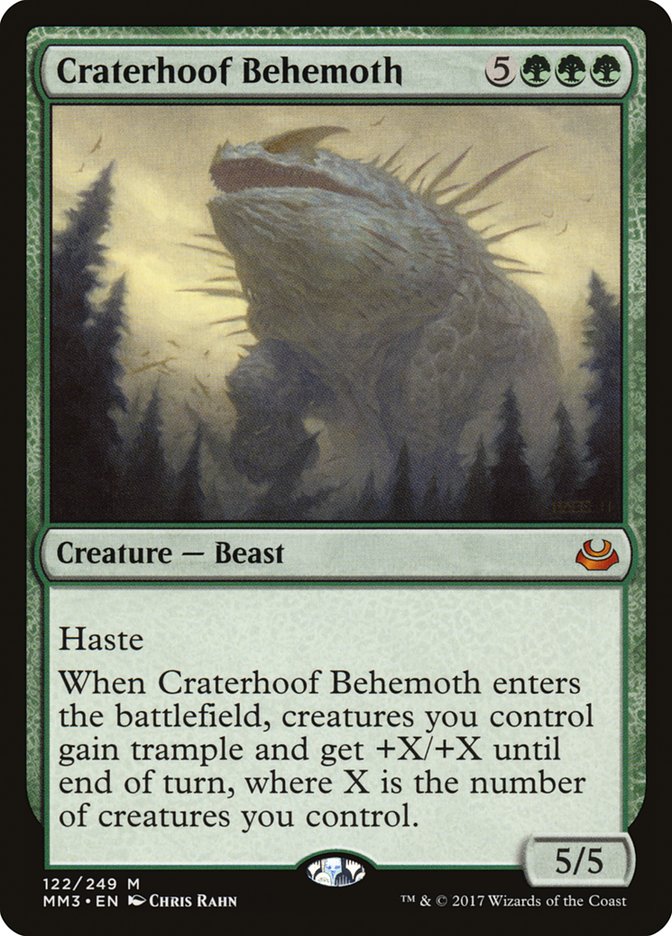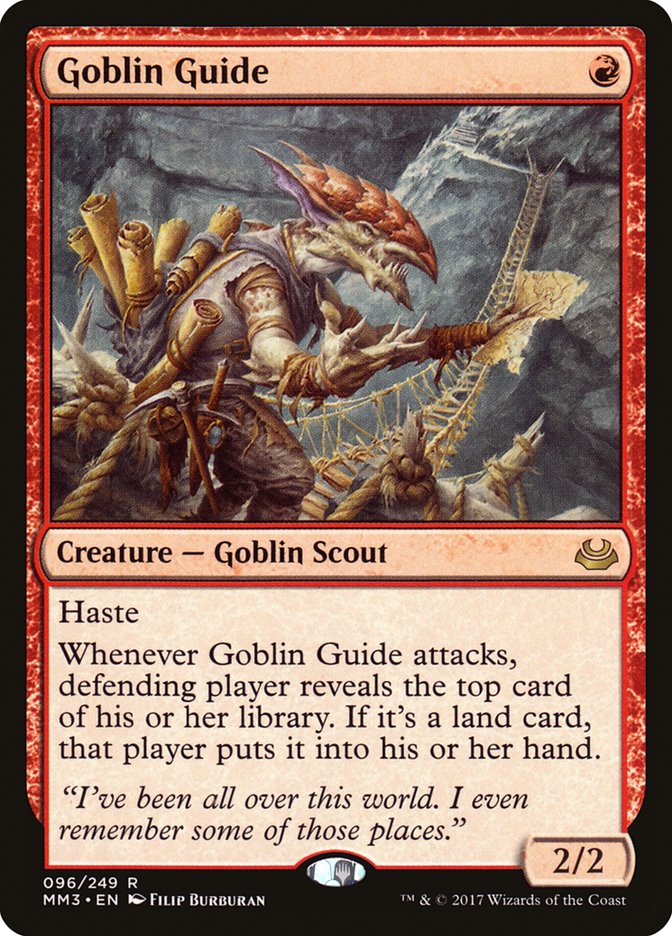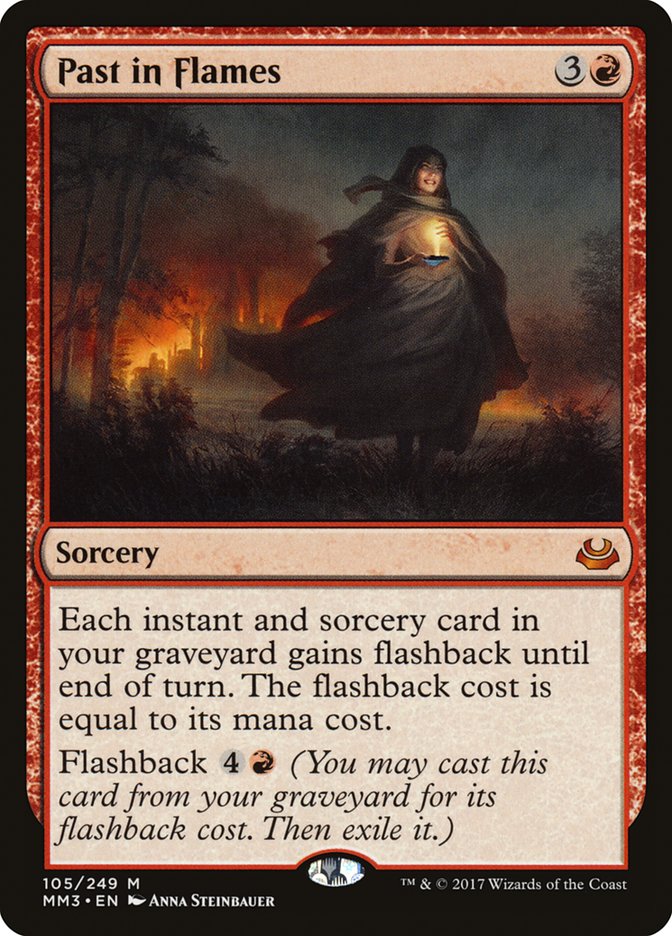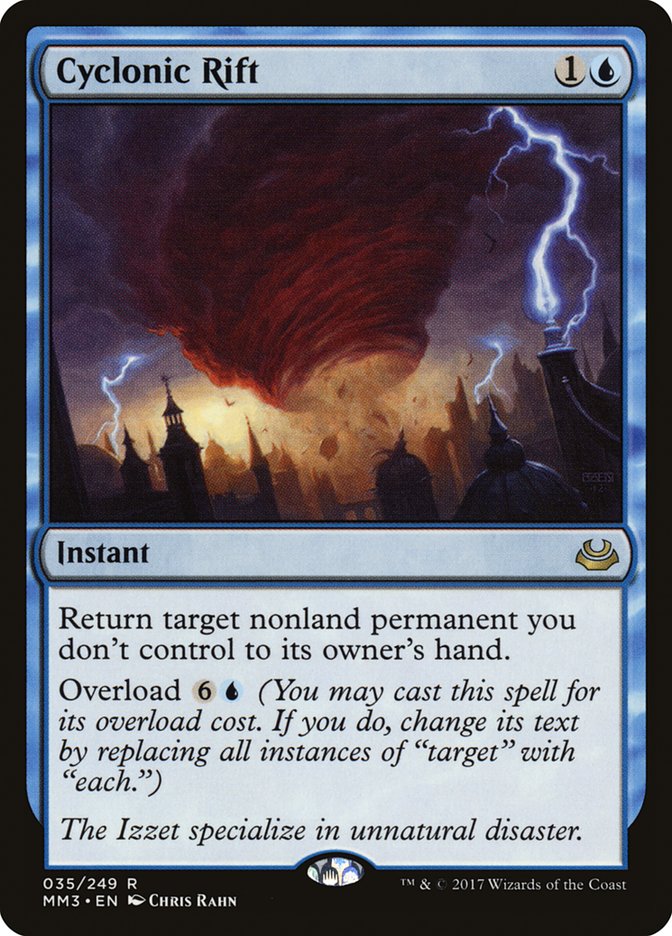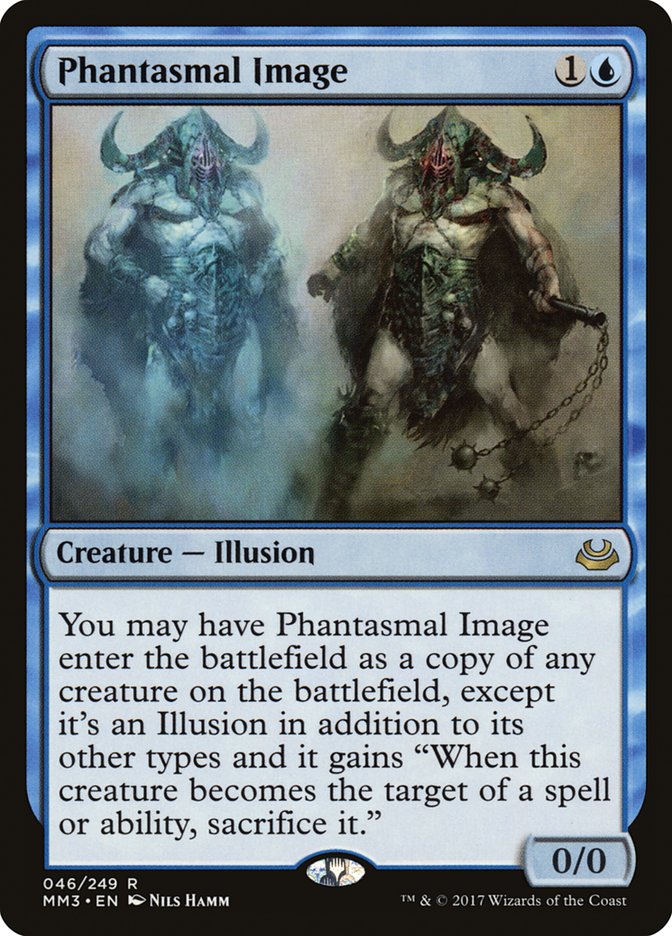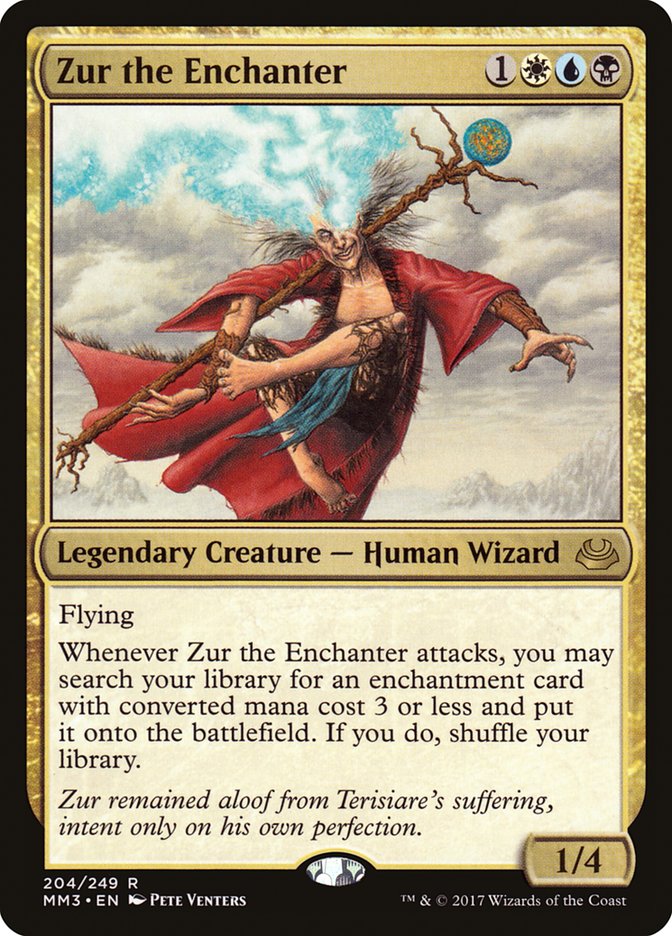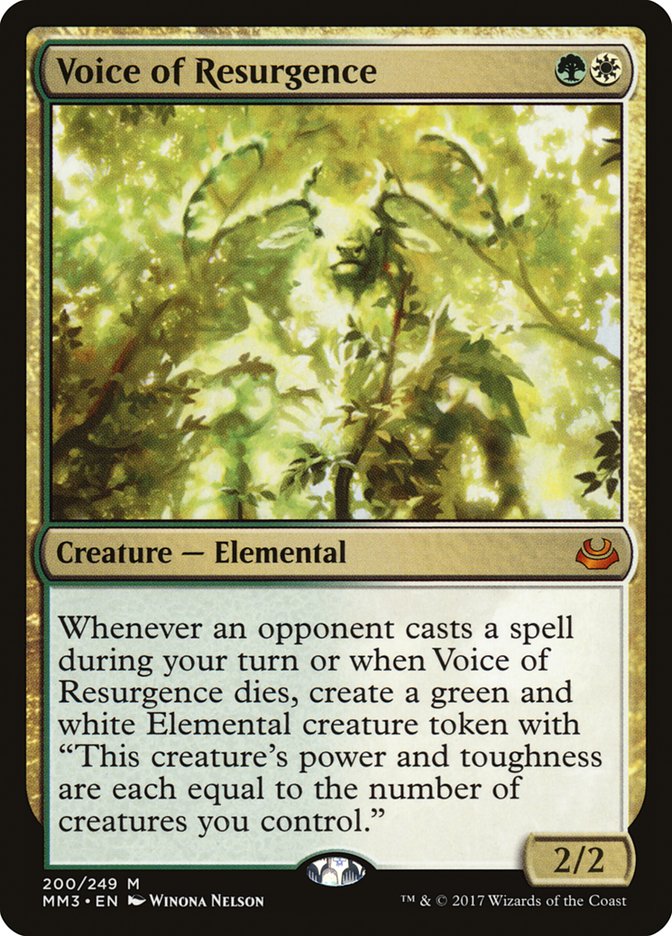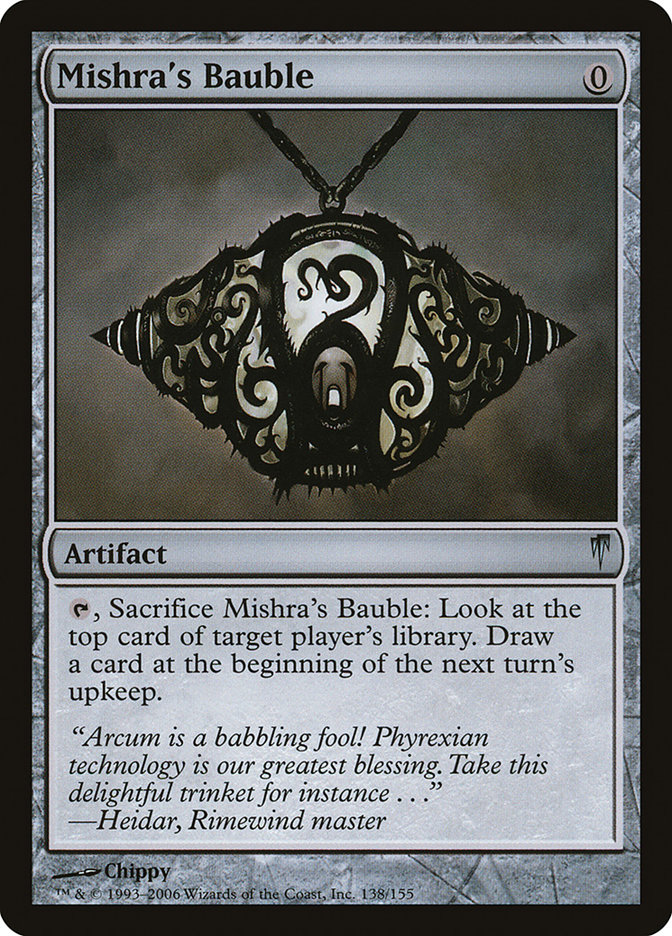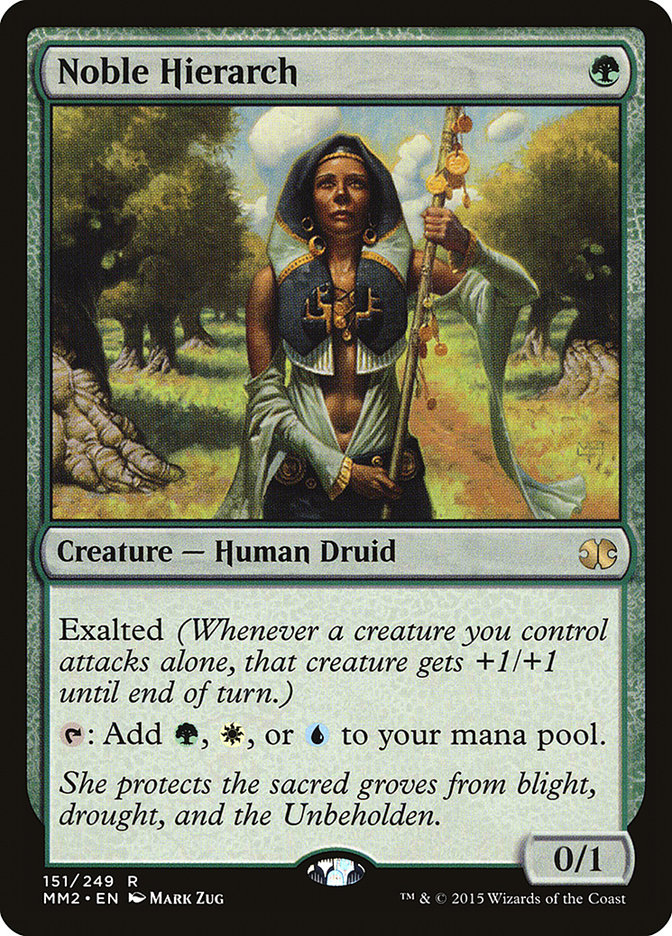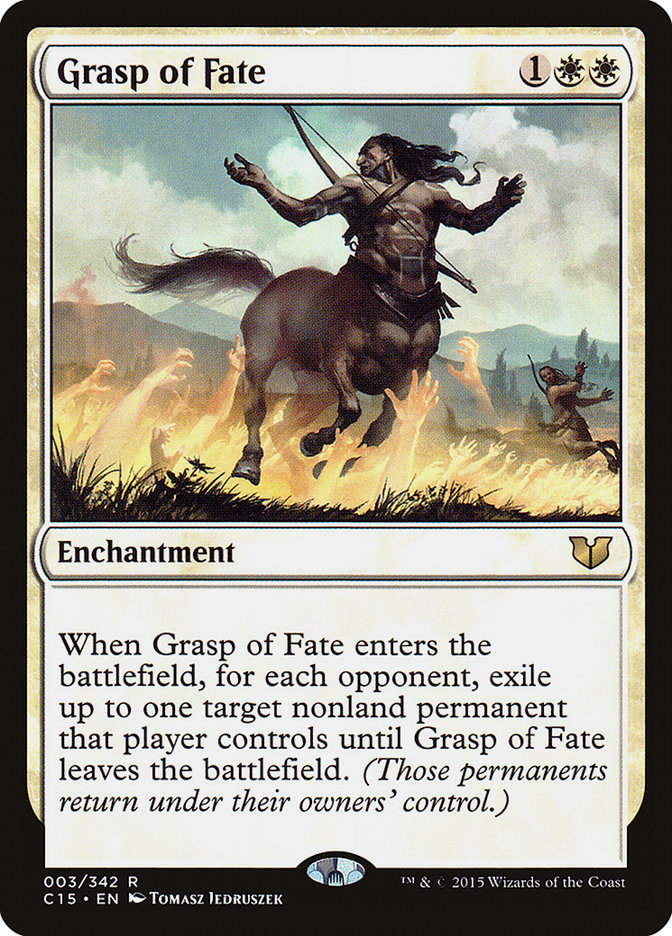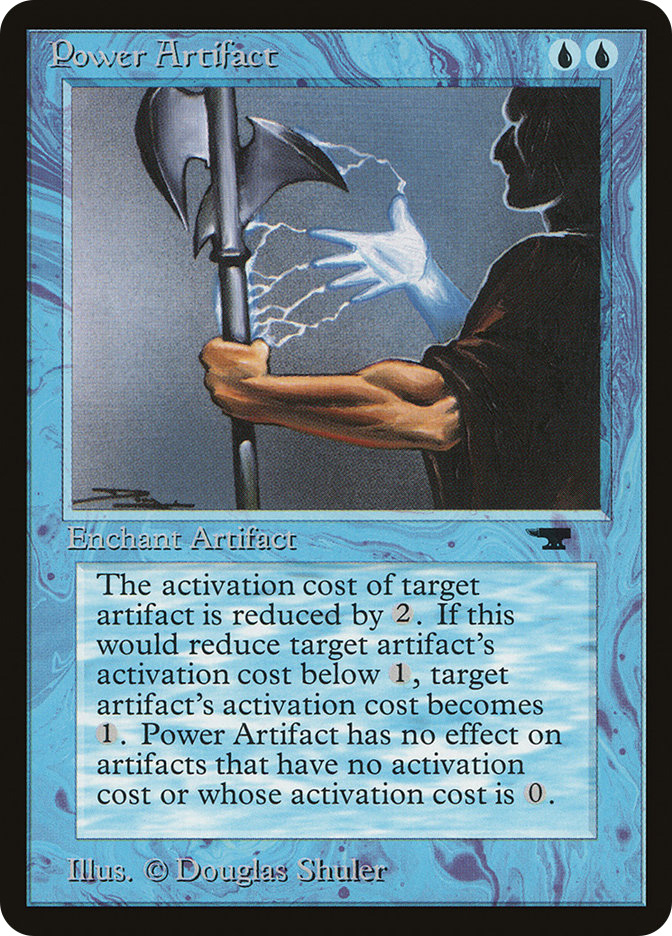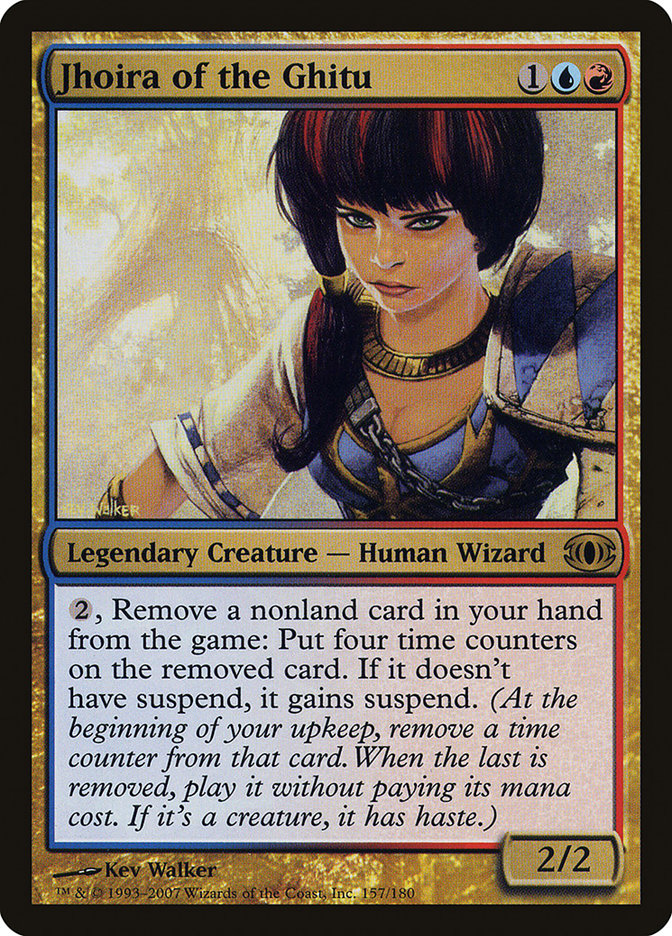Legacy is my favorite constructed format. Miracles might dominate the top tables at the biggest events, but the format is incredibly diverse, especially at the local level. Decks are powerful, games are exciting, and strategies rarely become obsolete. The best decks today are pretty similar to the best decks from two, three, even five or six years ago, making it the perfect format for players who don’t have time to game every single week.
Unfortunately, the problem with Legacy today is also the same as it was five years ago: accessibility. Most top-tier Legacy decks cost between $2,000 and $4,000 retail, which is a lot to spend on a set of 75 cards that you may only get to use a few times each year. On a bang-for-your-buck basis, I can’t really advocate for Legacy over a significantly more popular format like Modern.
That said, too many people ignore Legacy as “that really expensive format for rich people” without actually taking a look at what it might take to buy in. Even though the Reserved List buyouts last spring made some of the format’s key staples more expensive, Legacy is actually cheaper to buy into now than it has been in quite some time. Eternal Masters helped a lot, as did the fetchland reprint in Modern Masters 2017. Couple that to the fact that Legacy is simply less popular than it was five years ago, and buying into Legacy starts to become pretty tempting. There might not be as many events as there were a few years ago, but the core community is strong, dedicated, and not going anywhere.
If you’re purely a speculator, I can’t really recommend buying into Legacy right now. The format has become fairly niche, and that may keep prices either stagnant or slowly dropping for the foreseeable future. It’s possible that Legacy will have a financial resurgence at some point, but that’s not something I’m planning for right now.
But this column is about more than just helping speculators. It’s about helping everyday players make the most out of their collections, allowing them to play as much Magic as possible for the lowest cost possible.
This is where I suggest looking beyond the conventional wisdom about Legacy. Simply put, you’re missing something wonderful if you ignore it completely. Have you considered building a Legacy deck but gotten cold feet once you started looking at the bill? Let’s see if I can help blaze your trail into one of Magic’s best formats.
How Cheap Is Cheap Enough?
Look—I get it. “Affordable” means different things to different people. If you’re living off an allowance or you work for close to minimum wage, keeping up with Standard might be an impossible struggle. If you’re a software developer with a six-figure salary and no family, a halfway decent Legacy brew might just be a rounding error in your savings account.
However cheap I make these decks, they’re not going to be cheap enough for everybody. Unfortunately, that’s just the reality of living in a capitalist society.
Since I have to have a cutoff point somewhere, I’ve decided to keep things at or under $1,500. That’s about where the most expensive Modern decks top out, and it’s about three seasons’ worth of top-tier Standard decks. Since I know that this will still be too expensive for some of you, I’m going to include some budget replacement tips in an attempt get the cost of each deck under a grand.
This seems like a lot—and it is—but once you build a Legacy deck, it’s yours forever. Not only don’t these decks rotate, but they tend to be playable for years and years. If you can’t stomach that kind of layout, I get it. But if you’ve already got a couple of Modern decks and you’re looking for a new challenge, I can’t recommend Legacy enough.
Burn
When discussing budget Legacy decks, there’s only one place to begin: with the cheapest deck in the format. Here’s Patrick Sullivan’s Legacy Burn deck from the Team Constructed Open on February 18, 2017:
Retail Cost (not including sideboard): $203.
How Risky Is It To Buy In? Not at all. People have been playing burn in Legacy for more than a decade, and they’ll be playing it for as long as the format exists. The cards in this deck are the most powerful burn spells ever printed, and most of them are relevant in Modern as well. Buy with confidence.
How Can We Make It Cheaper? We can’t. Burn is the cheapest deck in the format, and there aren’t any more cuts that can be made. The good news is that there are no really expensive cards in this deck. Goblin Guide is just $18. Eidolon of the Great Revel is $12. Everything else is under five bucks. There are Standard decks that cost more than this iteration of Legacy Burn.
Dredge
The biggest problem with Dredge is that you either like playing it or you don’t. It’s an odd deck to play, and it takes a decent amount of practice to get good. It can take down a large Legacy event on the right day, though. Here’s the list Damon Whitby used to win the SCG Classic on September 4, 2016:
Creatures (22)
Lands (13)
Spells (25)
- 1 Firestorm
- 4 Careful Study
- 4 Cabal Therapy
- 4 Breakthrough
- 4 Lion's Eye Diamond
- 4 Bridge from Below
- 4 Faithless Looting
Sideboard

Retail Cost (not including sideboard): $715
How Risky Is It To Buy In? Not at all. More than two-thirds of the cost of this deck is tied up in the Lion’s Eye Diamonds, and that’s one of the most powerful cards on the Reserved List. It can’t be reprinted, and it’s necessary to build several of Legacy’s most fun brews.
How Can We Make It Cheaper? Not easily. Much like Burn, Dredge is a finely-tuned engine that can’t survive without all of its most important pieces. Building this deck mostly comes down to whether or not you’re able to spring for the Lion’s Eye Diamonds.
Belcher
If you buy into Dredge, you get a bit of a two-fer: Belcher also needs four copies of Lion’s Eye Diamond to work, and getting the other cards you need will cost less than $300. It’s not the most consistent deck in the world, but it’s one of the most fun ways to spend an afternoon. Check out Joshua Everly’s build here:
Spells (47)

Retail Cost (not including sideboard): $802
How Risky Is It To Buy In? Low. This deck is cheap other than the $520 you need to spend on the Lion’s Eye Diamonds, and most of the other cards are at their historic lows. $15 for Chrome Mox? $2 for Burning Wish? Yes, please.
How Can We Make It Cheaper? You can shave $75 off the top by replacing Taiga with Stomping Ground, but much like with Dredge, the Lion’s Eye Diamonds are essential. If you’re a budget Legacy brewer, there is probably no more essential playset to own.
B/G Depths
Want to play combo? Here you go. This deck wins via Dark Depths, and it can do it frighteningly quickly. Take a look at this list that Casey Comart used to win a StarCityGames IQ on March 4, 2017:
Creatures (8)
Lands (23)
Spells (29)

Retail Cost (not including sideboard): $835
How Risky Is It To Buy In? Low. Dark Depths; Thoughtseize; Urborg, Tomb of Yawgmoth; and the fetchlands were all printed recently. Bayou is on the Reserved List. Many of these cards are good in other decks.
How Can We Make It Cheaper? Replacing the two Bayous with Overgrown Tombs will bring the total cost of the deck below the $500 mark. You can also mix and match the fetchlands a bit depending on what you already own.
B/R Reanimator
Older Reanimator decks used to run blue for disruption and deck-filtering elements, but this B/R version swaps its countermagic for more proactive spells like Thoughtseize and Unmask. This might not have been a budget deck in the past, but it’s fairly affordable now. Oh—and it’s a Tier 1 strategy in Legacy right now.
Creatures (10)
Lands (12)
Spells (38)

Retail Cost (not including sideboard): $915.
How Risky Is It To Buy In? Moderate. Most of these cards are only good in this deck, and most of them cannot be played in Modern. However, there isn’t much reprint risk on the horizon here. Chrome Mox, Entomb, and Griselbrand have been printed recently, as have the fetchlands. The dual lands are on the Reserved List, and they make up most of your buy-in cost.
How Can We Make It Cheaper? This one’s easy: replace the Badlands and Bayou with shocklands, thereby cutting about $400 off the price of the deck. As long as you don’t cheap out on the fetches, your mana will still be fine. You’ll lose a few games to the extra damage (Reanimate will have you playing with your life total often enough), but it’s a sacrifice worth making if you’re on a budget.
Eldrazi and Taxes
This deck somehow manages to combine the frustration of playing against Death and Taxes with the frustration of playing against the Eldrazi while somehow staying cheaper than both. The result is a pretty nifty brew that led Ben Horton to a second-place finish at a StarCityGames.com IQ on March 4, 2017:
Creatures (26)
- 4 Thalia, Guardian of Thraben
- 2 Endless One
- 4 Eldrazi Mimic
- 4 Reality Smasher
- 4 Thought-Knot Seer
- 4 Matter Reshaper
- 4 Thalia, Heretic Cathar
Lands (22)
Spells (12)

Retail Cost (not including sideboard): $929.
How Risky Is It To Buy In? Moderate to low. Ancient Tomb, Chalice of the Void, and Thorn of Amethyst should all be reprinted within the next couple of years, but most of these cards are either relatively recent (the Eldrazi) or have recently been reprinted (Wasteland, Karakas, Cavern of Souls).
How Can We Make It Cheaper? This is hard, since there are so many moving pieces to Eldrazi and Taxes and each “tax” gets worse if it isn’t backed up by its friends. Karakas can certainly be cut until you can afford to buy one, but the Chalices and Thorns are non-negotiable.
Colorless Eldrazi
If you’re more of an Eldrazi purist, consider this nifty little deck instead. It’s a Tier 1 strategy that you can feel good about bringing to any Legacy event you attend. If you’re okay smashing face with tiny spaghetti monsters, Colorless Eldrazi is the deck for you. Here’s the build that Daniel Haberek used to win the SCG Classic on February 19, 2017:
Creatures (24)
- 2 Simian Spirit Guide
- 4 Endless One
- 2 Endbringer
- 4 Eldrazi Mimic
- 4 Reality Smasher
- 4 Thought-Knot Seer
- 4 Matter Reshaper
Lands (25)
Spells (11)

Retail Cost (not including sideboard): $1,288
How Risky Is It To Buy In? Moderate to low. You can pretty much copy and paste the risk paragraph from the last deck we looked at here because there’s so much overlap. Chalice of the Void is the only really bad one here, and it’s certainly possible that the Eldrazi will gain enough value between now and when Chalice is reprinted to make up for whatever value you lose.
How Can We Make It Cheaper? Again, this isn’t really possible. This deck doesn’t absolutely have to have Wastelands, I suppose, and you can still smash face without Chalice of the Void. Just don’t go too long without them.
Death and Taxes
A classic. Death and Taxes might not be in Legacy’s tippy-top tier, but it’s certainly in the format’s second tier. This Craig Wescoe version is where I’d begin brewing:
Creatures (26)
- 4 Mother of Runes
- 1 Serra Avenger
- 4 Flickerwisp
- 4 Stoneforge Mystic
- 1 Mirran Crusader
- 3 Phyrexian Revoker
- 4 Thalia, Guardian of Thraben
- 1 Spirit of the Labyrinth
- 2 Recruiter of the Guard
- 1 Sanctum Prelate
- 1 Palace Jailer
Lands (23)
Spells (11)

Retail Cost (not including sideboard): $1,371
How Risky Is It To Buy In? Moderate to high. Rishadan Port and Aether Vial are both expensive, and they’re likely to be reprinted at some point in the next twelve to eighteen months. Ditto Horizon Canopy. The rest of these cards are fairly safe, though many of them don’t have uses in other decks.
How Can We Make It Cheaper? Playing eight copies of Plains instead of the Rishadan Ports, Karakases, and Horizon Canopy reduces the cost of this deck by a full $780—down from $1,371 to the much more budget-friendly number of $591. It’s not ideal, but it’s a great place to start.
This Week’s Trends
Because everyone has been spending all their time and money on Modern Masters 2017, the Standard market has continued to drop. Even staples like Verdurous Gearhulk and Saheeli Rai are down this week despite there not being too many reasonable alternatives in the format.
I’m not going to advocate speculating on the format’s current staples—Standard is stale enough that I can’t imagine there will be a major surge in demand before Amonkhet preview season starts—but it’s worth remembering that they’re not going away for many, many months, and you will probably want to play Standard at some point over the next calendar year. If you can take advantage of people’s flagging interest, you should be able to get some really good deals.
Speaking of Modern Masters 2017, packs of the set continue to be opened at a furious pace. This has caused many of the singles prices to drop significantly, as we all expected. Don’t forget, though: unlike most sets, the bulk of cards from Modern Masters 2017 have already been opened. Now is a great time to either buy or trade for what you need.
Which prices have changed since my set review? Let’s take a look:
Down $10:
Arid Mesa isn’t one of the more important fetchlands in Modern right now, so it saw a decently large drop. This isn’t surprising, and its current price is still in line with the rest of this cycle. The Damnation drop isn’t much of a shock, either—its price had a lot more to do with a lack of supply than a lot of competitive demand. Both of these cards are now in line with where I’d feel comfortable buying in.
Down $8:
Blood Moon has been resilient to reprints before, and it will rebound again. Feel free to start trading for these now.
Down $6:
I admit I should have been more cautious about Venser at $10. I had expected it to maintain a higher price because From the Vault: Twenty was fairly ubiquitous and I figured that the supply of these was already pretty high because of that. At any rate, it’s a heck of a deal at just $4. It might not be much of a Modern card, but it’s a casual darling.
Down $5:
Linvala will still probably end up about $5 lower than this because she just isn’t played anywhere right now. I’m holding off. Feel free to grab these two fetchlands if you need them, though.
Down $2:
I’m a big fan of Goblin Guide at $18, and Griselbrand isn’t going much lower, either. Buy with confidence.
Down $1:
Past in Flames and Cyclonic Rift are both very solid long-term specs. They should both end up at least doubling their current retail price if they aren’t printed again within the next two to three years. I’m trading for these and socking them away.
Up $1:
Hey, a card that was underpriced! Voice of Resurgence is essential to both the Bant and Abzan Company decks, and demand has stayed fairly high. Don’t expect this card to drop any from here.
It’s also worth noting that several other Modern Masters 2017 cards have started trending upward again as well. The change hasn’t been reflected in the SCG retail prices yet, but I expect that to change soon. Here’s the list:
If you were planning to buy any of these cards during the post-Modern Masters price trench, I’d either do it now or wait until the seasonal lull in August.
What else is happening in Modern? Well, the SaffronOlive effect has caused Seismic Assault to quadruple in price and Swans of Bryn Argoll to start climbing as well. This deck is cute, fun, and still fairly affordable: you can still find Seismic Assaults for around $10 if you look hard enough. This is not a new deck, though, and it’s not a ton better than it was last week. Expect Seismic Assault to drop off until it’s back in the $4-$5 range.
Also up last week: Pain’s Reward, thanks to a brew courtesy of Wedge at The Mana Source. Check it out:
Creatures (18)
Lands (22)
Spells (20)

I doubt this deck is going to start putting up major results anytime soon, so I’d pluck Pain’s Reward out of your bulk and sell it into the hype. If you disagree with me, though, it’s worth noting that neither Plunge into Darkness nor Sanguine Bond has spiked yet. Think this deck is going to have a cult following? Go buy those two cards ASAP.
Also up in Modern this week: Mishra’s Bauble, All Is Dust, Dark Confidant, Noble Hierarch, Goryo’s Vengeance, Pact of Negation, Engineered Explosives, Karn Liberated, Scapeshift, Maelstrom Pulse, and Kolaghan’s Command. If you read my article a few weeks ago, you probably saw this coming. More people always buy into Modern right after a Masters set is released, and the prices of the format’s other top staples tend to keep rising over the next couple of weeks.
Three Eternal and casual cards spiked last week as well: Grasp of Fate, Power Artifact, and the Legends version of Concordant Crossroads.
Grasp of Fate is a very good Commander card, but the price movement here was definitely due to market manipulation. I’m selling into the hype, and I expect it to end up around $6.
The Power Artifact spike is a continuation of the buyout that I talked about last week. It’s a powerful Reserved List card, so it’ll probably stay over $40, but I doubt you’ll find too many buyers at the $80 people are asking for their copies right now.
The Concordant Crossroads spike is probably due to Old School Magic, which is why the Chronicles version hasn’t budged. You might want to grab one of those if you want one—there could be a run on them thanks to the Legends spike—but my guess is that there were fewer than a dozen copies of these available for sale and buying them out was fairly trivial.
Last, the decklist for Duel Decks: Mind vs. Might was released. No, Ancestral Vision was not included. We did get Coat of Arms, Beacon of Tomorrow, two copies of Young Pyromancer, two copies of Burning-Tree Emissary (on top of the MM2017 version), and three copies of Rift Bolt, though. Expect all of these cards to drop and have their price ceiling significantly lowered going forward.
We might also see a surge in demand for Jhoira Commander staples as people buy the deck and use it as a starting point. According to EDHREC, the deck’s “signature cards” include Paradox Haze, Timecrafting, Artisan of Kozilek, Obliterate, Aeon Chronicler, Void Winnower, Decree of Annihilation, It That Betrays, and Omniscience. If you’ve been thinking about building this deck or speculating on any of these cards, do it before the Duel Decks hit shelves.


